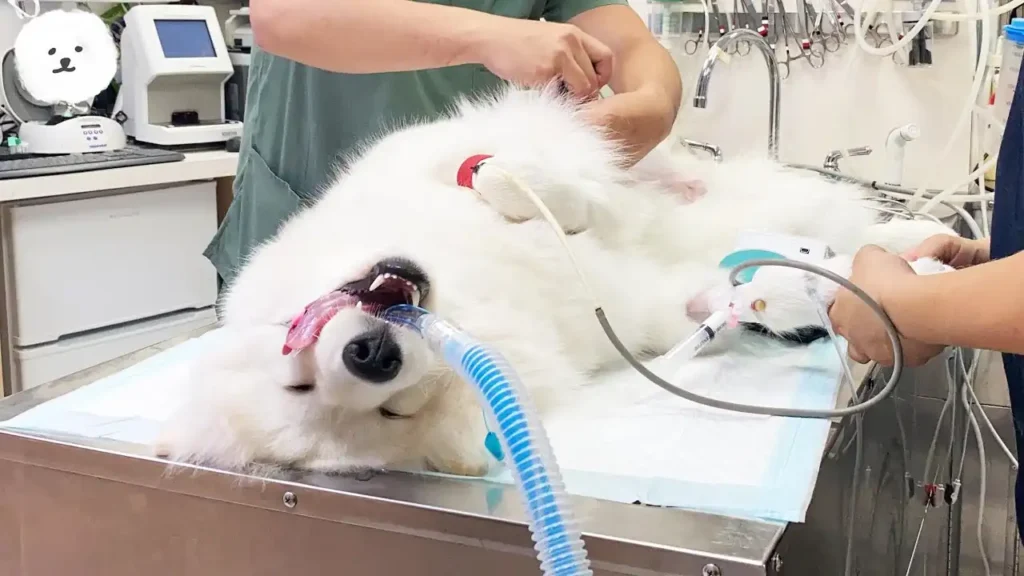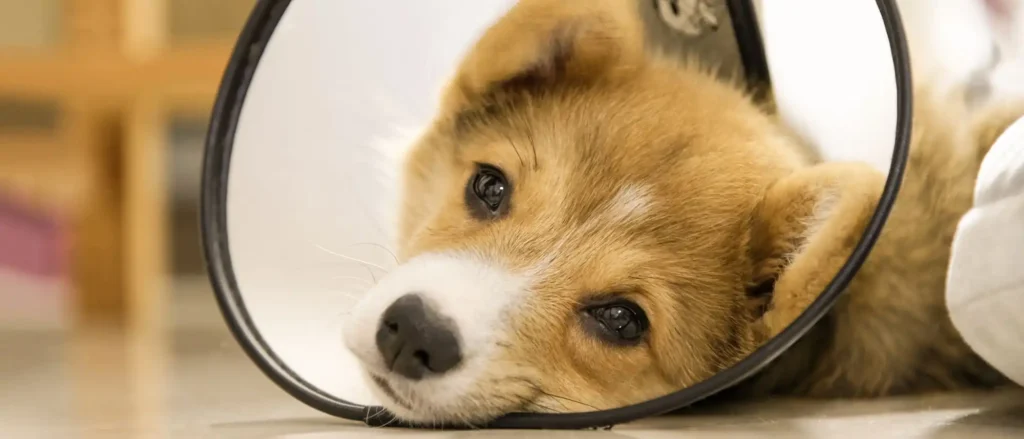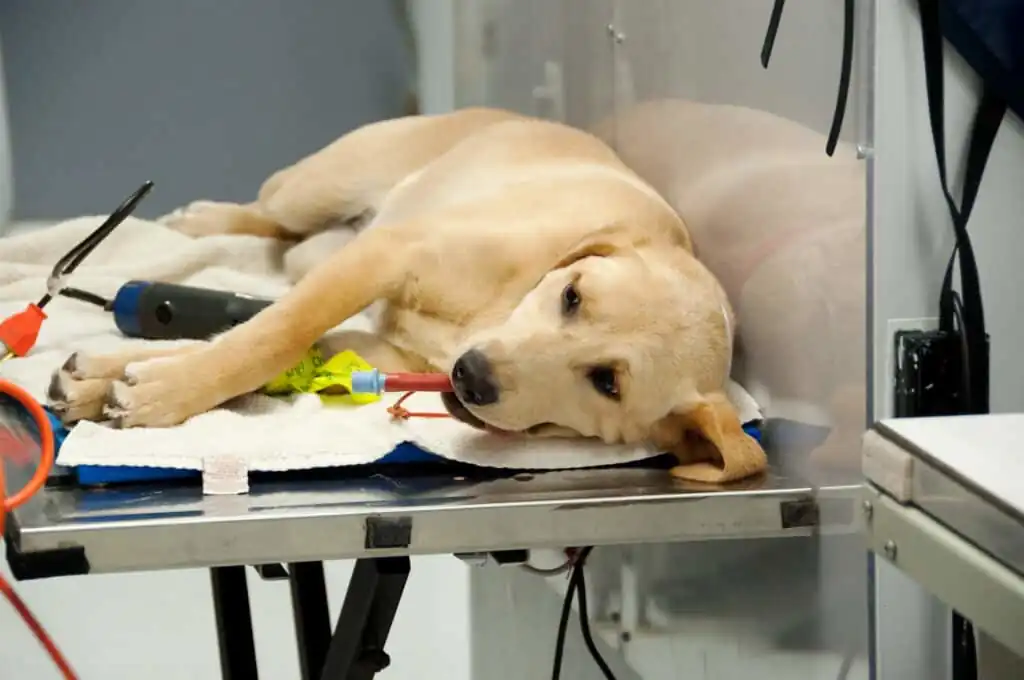Advantages and disadvantages of neutering surgery for male and female dogs, and precautions before and after surgery
Has your dog been neutered?

Let’s learn about the advantages, disadvantages and precautions of dog neutering today!
Little Dog Encyclopedia: Sterilization is to tie up the vas deferens and fallopian tubes, and sterilization is to remove the testicles, uterus and ovaries. The correct term for sterilization of furry babies is sterilization!
(1) What are the different methods of spaying-neutering male and female dogs?
🐕● Male dog
Testicularectomy surgery: removes both testicles to reduce male hormones.
🐕● Female dog
Ovariohysterectomy: removes the ovaries, fallopian tubes, and uterus to reduce estrogen.
Ovariectomy: Removes the ovaries and preserves the uterus, but has the same effects as an ovariohysterectomy.
(2) At what age is it better to spay-neuter a dog?
🐕● Small dogs: They can be neutered after 6 months.
🐕● Medium and large dogs: It is recommended to perform neutering surgery after 1 year old. Neutering too early will affect the production of growth hormone.
In addition to body size, there are also gender differences! Especially for female dogs, neutering before and after the first estrus can reduce the chance of breast tumors. However, surgery will not be performed during estrus. At this time, the reproductive organs and surrounding organs will swell, and the process may be easily injured and cause bleeding.
It is recommended to ask a professional veterinarian. After all, the actual condition of each dog is different. For example, old, underweight or overweight dogs are prone to postoperative complications and other problems.
How much does it cost to spay-neuter a dog?

The cost of sterilization is slightly different in each veterinary hospital. You can refer to each county and city, such as the “Hsinchu County Veterinary Medical Association’s Medical Treatment Fee Standards for Practicing Members“, and there is usually not much difference.
Counties and cities also provide sterilization subsidies, so we can make good use of resources!
• Yilan County: No relevant announcements yet.
• Keelung City: $800 per male cat and $1,500 per female cat.
• New Taipei City: $600 per male cat and $1,200 per female cat.
• Taipei City: $800 per male cat and $1,500 per female cat.
• Taoyuan City: $500 per male cat and $1,000 per female cat.
• Hsinchu County: $800 per male cat and $1,500 per female cat.
• Hsinchu City: $1,000 per male cat and $1,500 per female cat.
• Miaoli County: $800 per male cat and $1,500 per female cat.
• Taichung City: $800 per male cat and $1,400 per female cat.
• Changhua County: $800 per male cat and $1,500 per female cat.
• Nantou County: $1,000 per male cat and $1,700 per female cat.
• Yunlin County: $800 per male cat and $1,500 per female cat.
• Chiayi County: $700 per male cat and $1,350 per female cat.
• Chiayi City: $800 per male cat and $1,500 per female cat.
• Tainan City: No relevant announcements yet.
• Kaohsiung City: $800 per male cat and $1,500 per female cat.
• Pingtung County: $800 per male cat and $1,500 per female cat.
• Hualien County: $500 per male cat and $1,000 per female cat.
• Taitung County: $800 per male cat and $1,600 per female cat.
• Penghu County: No relevant announcements yet.
• Kinmen County: $1,000 per male cat and $1,800 per female cat.
• Lianjiang County: No relevant announcements yet.
3 things to keep in mind when spaying-neutering your dog!
1. Physical examination
Preoperative physical examinations, blood tests, etc. are performed to ensure that the dog has no underlying health problems, such as liver, kidney, or heart murmurs, and that there are no physical problems before anesthesia can be performed.
2. Anesthesia
Anesthesia is administered before surgery to ensure that the dog does not feel anything during the surgery.
3. Fasting
Fasting for 8 hours and water for 3 hours before the operation will prevent the dog from being blocked by undigested food during the operation, choking into the trachea, and causing difficulty in breathing.
Why do dogs need to be neutered? What are the benefits of spaying-neutering your dog?

(1) Avoid childbirth
If the dog becomes pregnant unplanned, it may be a risk for the dog and a burden for the dog.
(2) Improve estrus behavior
• Frequent barking
• Want to go out and mate
• Marking for random peeing
• Riding behavior
• Aggressive behavior
(3) Reduce disease risk
| Male Dog | Female Dog |
| testicular cancer | breast cancer |
| undescended testicle | ovaries |
| Hypertrophy of the prostate gland | Uterine pus |
| Diseases of the prostate gland | false pregnancy |
What are the risks of spaying-neutering a dog?

Although neutering can improve behaviors caused by hormones, it does not completely solve behavioral problems. Therefore, neutering a dog will not affect its personality, intelligence, learned or habitual behaviors!
1. Obesity
Removing reproductive organs and reducing hormone secretion will reduce metabolism and cause dogs to become obese. Therefore, it is very important to control diet and exercise regularly!
2. Urinary incontinence
Spaying or neutering surgery before 6 months old or for large dogs can easily cause the dog’s body to become uncomfortable and leak urine due to lack of sex hormones and excessive secretion of growth hormone.
3. Ligament and joint diseases
Neutering surgery on medium and large dogs aged 6 months can easily lead to sequelae such as torn cruciate ligaments and arthritis.
Post-neutering care for dogs!
It’s normal for a dog to feel lethargic and want to sleep after being neutered! Because anesthesia affects the central nervous system, it usually takes one day to metabolize and restore energy. After 5 to 14 days, you can return to the doctor to remove the sutures and resume normal activities. In order to avoid inflammation of the dog’s sterilization wound and help the wound heal, hair plucking must be done well. Post-operative care!
1. Provide a quiet environment
If it is a multi-pet household, keep the dog away from other animals and keep it quiet to have a good rest and help the wound heal.
2. Avoid running and jumping
If you need to move, please use a leash to prevent your dog from running or jumping, which may cause postoperative complications.
3. Avoid touching water
Do not bathe or swim for at least 10 days to avoid wound infection.
4. Use an Elizabethan collar
Use an Elizabeth collar before removing the stitches, and choose a suitable size, not too loose or too tight, to prevent the dog from licking the wound and causing infection.
5. Observe the wound
Check the wound every day to ensure that it is healing normally. If the wound shows redness, swelling, discharge, continuous bleeding, or the dog has loss of appetite, vomiting and diarrhea, or abnormal pain, etc., it is necessary to go to the veterinary hospital for examination as soon as possible.
6. Control your diet
Maintain a balanced nutrition, but reduce the amount of food, choose light, low-fat food, to avoid the dog due to the deterioration of metabolism and become fat.
Dog Neutering Q&A!
🐕(1) Will a dog still go into heat after being neutered?
Won’t! Once the reproductive organs are removed and the sex hormones are no longer secreted, the dog will stop being in estrus. However, behaviors such as riding and peeing are often mistaken for being in estrus. If you feel troubled, it is recommended to ask a veterinarian!
🐕(2) Will dogs still have menstruation after being neutered?
If the ovaries are removed and sex hormones are no longer secreted, there will be no menstruation twice a year!
